The Tryon in Winter
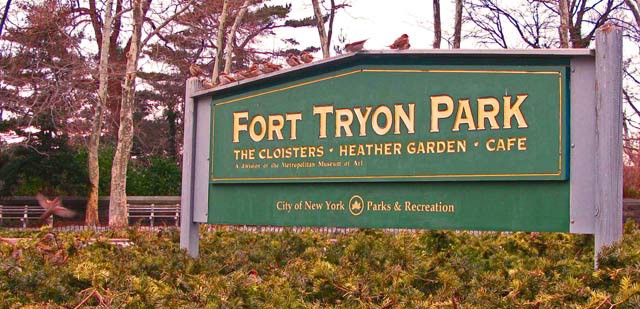
In the decade-plus I’ve lived in Washington Heights, I had never been to Fort Tryon Park in February, but this year, motivated by a resolution to run more (a resolution that slipped by in January), I went twice. The first time was on the weekend of the snowstorm that walloped much of the East Coast but managed to miss New York City, stopping-or so I heard-at Staten Island. After heading north on Fort Washington Avenue, which ascends along the western ridge of upper Manhattan, I arrived at the park on 190th Street, where I was greeted by a crescent of elegant sycamore trees and a coterie of chirping sparrows.
I passed between the stone pillars marking the entrance and was both surprised and amazed to find the heather garden already in bloom.
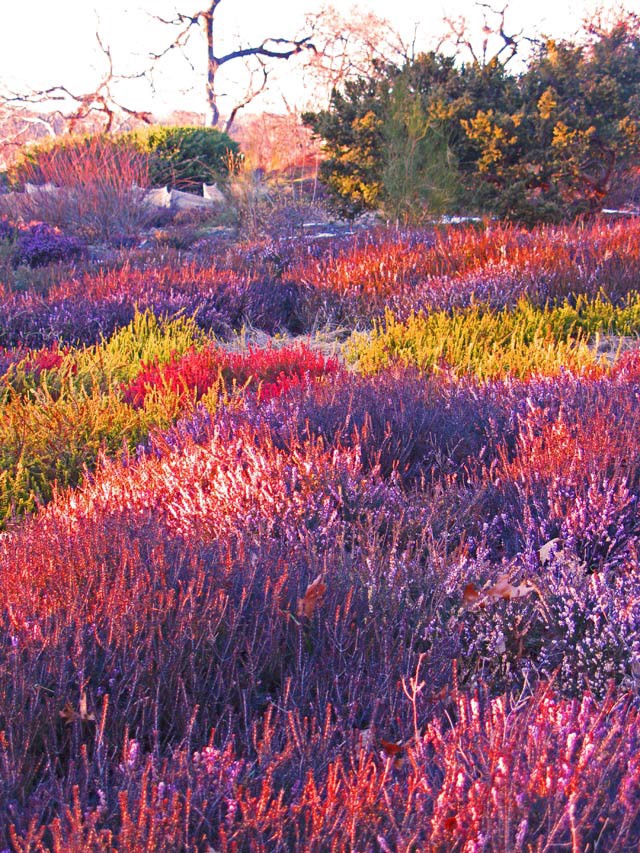
Adding to the coral-reel effect were Scottish brooms, patches of cotoneaster and-in the distance-he medusa-like branches of a colonnade of American elm trees.
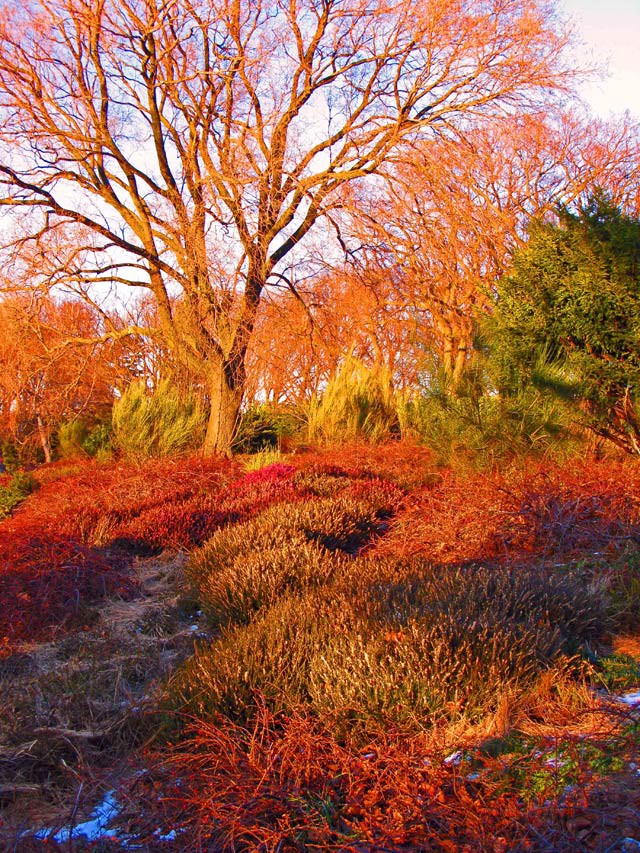
Below me, a grotto of Eastern White Pines-one of the most dignified of all the evergreens in the city-provided a screen against the low afternoon sun.
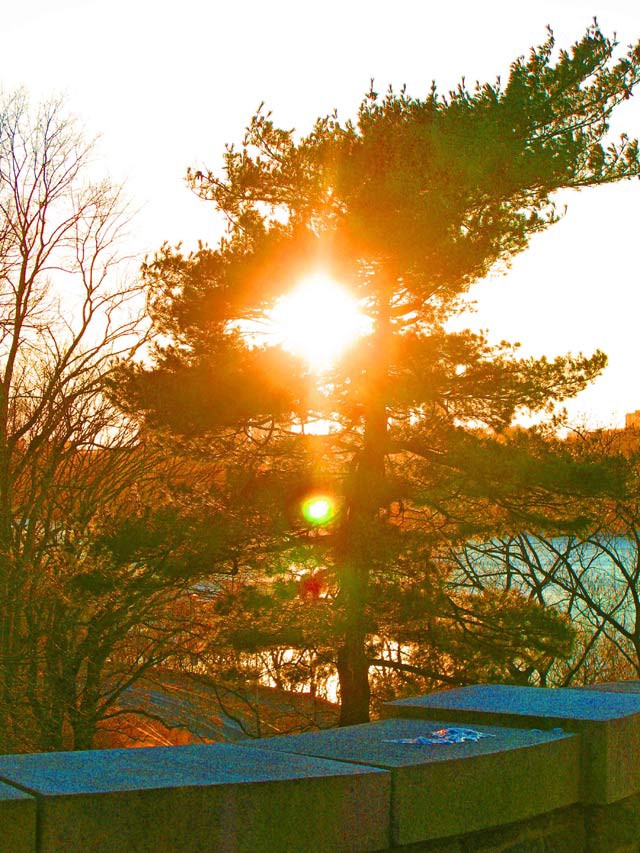
Fort Tryon Park was designed by Frederick Olmstead, Jr. (the son of the Central Park architect) and completed in 1935 with money and land provided by John D. Rockefeller. (The Cloisters-the branch of the Metropolitan Museum dedicated to medieval art-was built at the same time.)
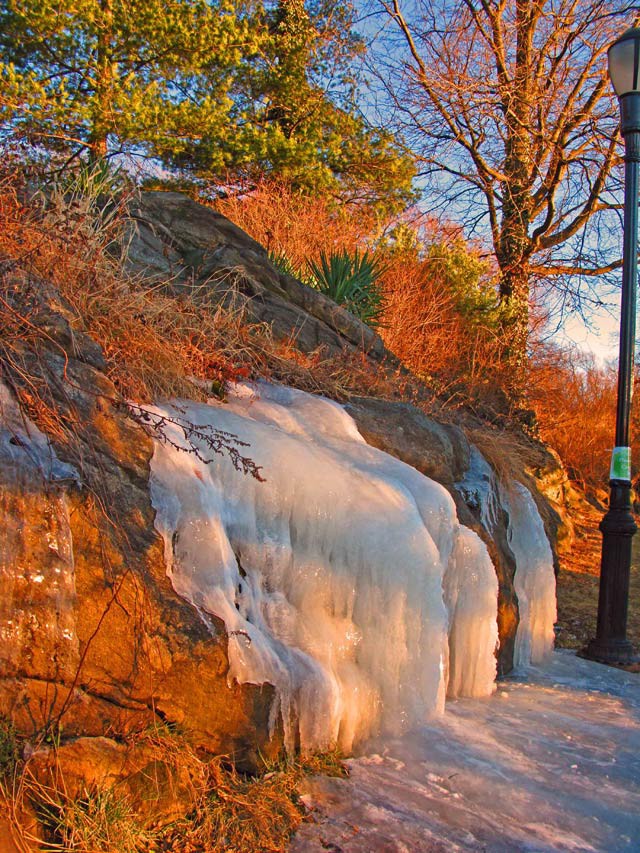
As I strolled along the elaborate network of paths and tunnels so beautifully embedded into the Manhattan schist that forms the bedrock of the island, I looked at the George Washington Bridge (completed in exactly four years, from 1927–1931) and wondered whether our current society will be known for having built such magnificent and enduring public works. I considered that Fort Tryon fell into serious disrepair during the middle decades of the last century before being restored in the late 1980s (with the help of Bette Midler, who is something of a patron saint in these parts for this reason), and it occurred to me that perhaps the restoration and maintenance is the best we can hope for in the modern era, when everything is so expensive and politically complicated.
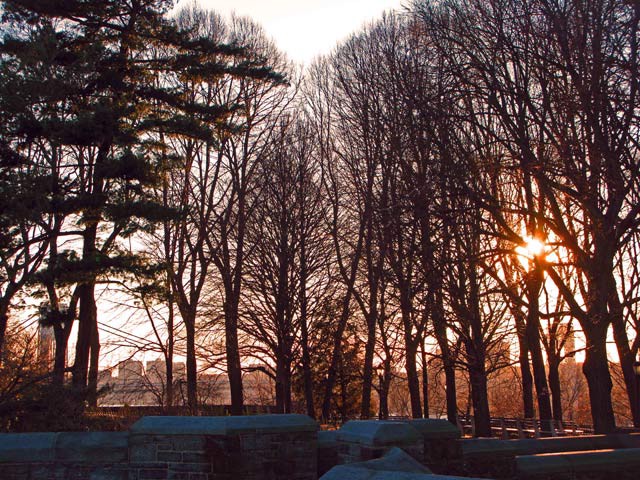
A week later I returned, a few days after the snowstorm. As expected, much of the park was buried under windswept drifts, but was no less beautiful for the lack of color.
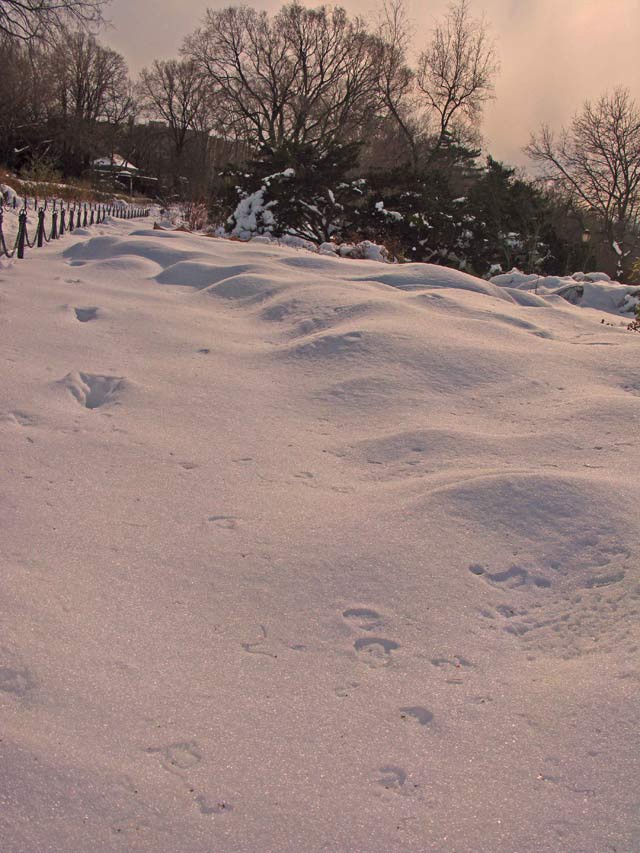
I think one of the reasons snow evokes such intense feelings of nostalgia for so many people-or maybe I should narrow that down to myself, now that I’m looking back on 40-is that it provide evidence for the idea that our lives can change radically in an instant.
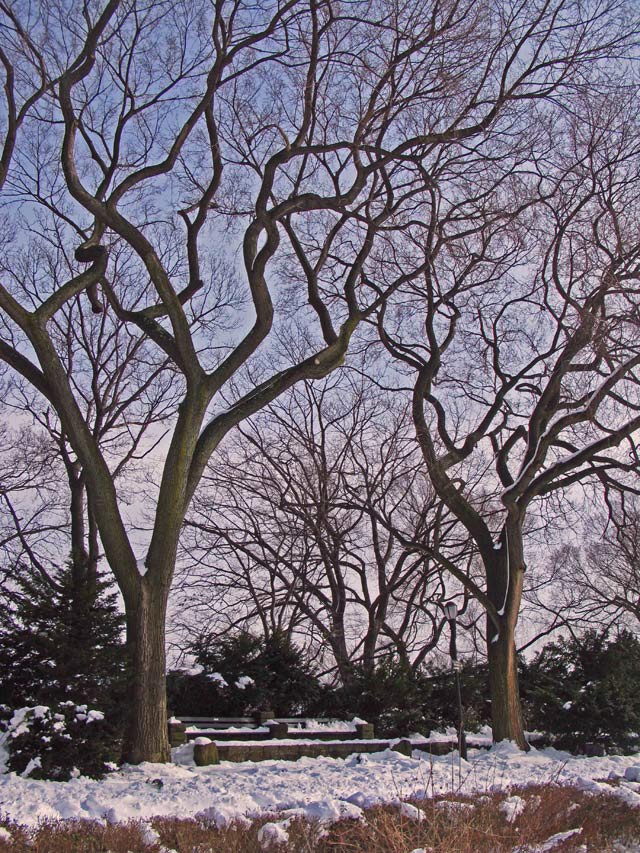
Whereas the previous week I was more inclined to step back and take in the entire vista, I now focused on smaller details, such as the individual flowers poking out from under the snow.
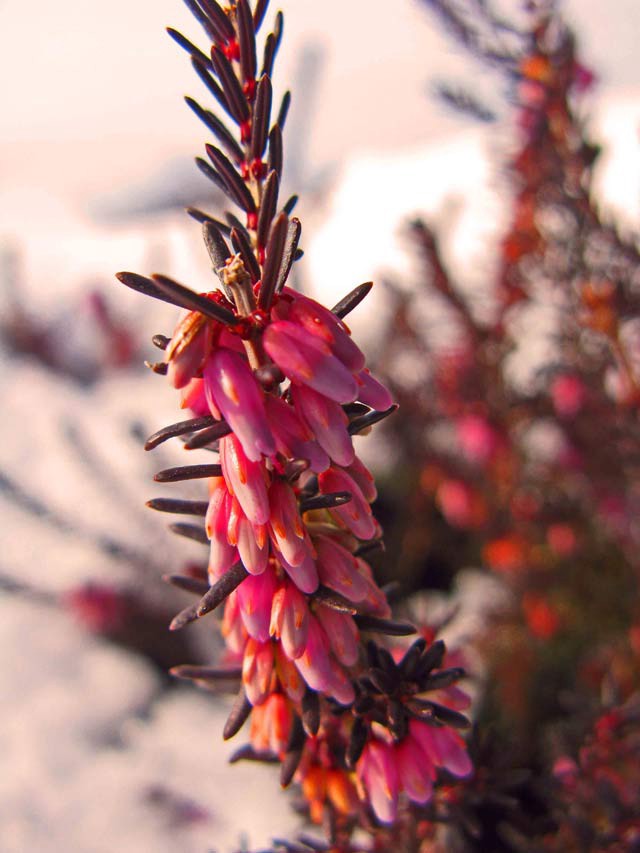
To examine the plants closely was to realize that-snow or not-they were preparing for spring, and many of the buds, such as the ones pictured, belonging to a sumac, seemed to have grown larger and more engorged during the intervening week. In short, I felt inspired by nature’s fundamental ambivalence to the sort of vagaries that humanity takes so seriously.
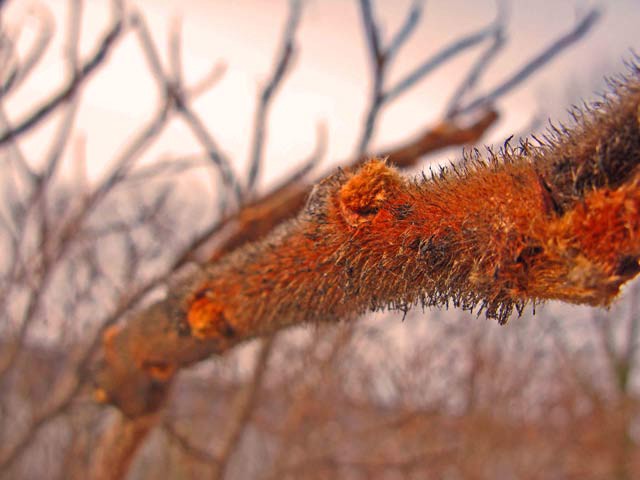
On the way out of the park, the birds were chirping under an old sycamore tree.
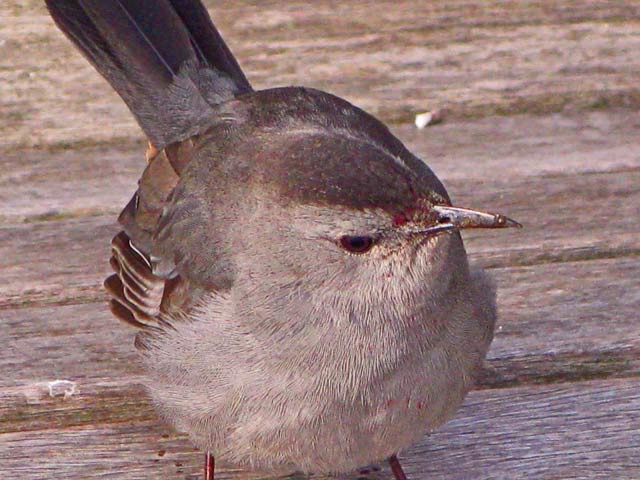
Change is slow, they seemed to sing, but it is always here.
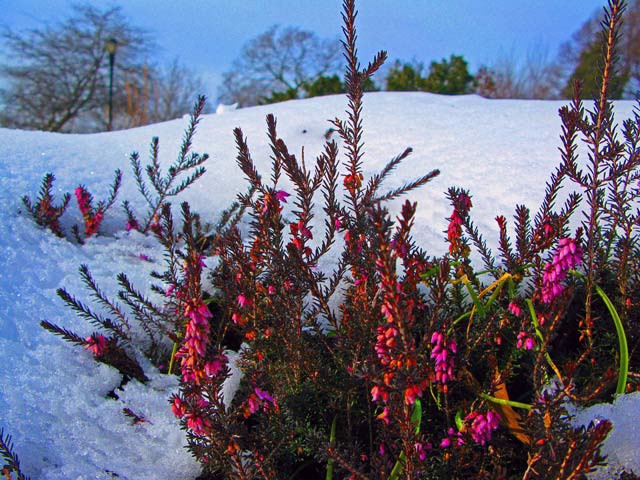
Matthew Gallaway is a writer who lives in Washington Heights. His first novel, ‘The Metropolis Case,’ will be published in 2010 by Crown. You can see him read for three whole minutes tonight at Housing Works in Manhattan!
